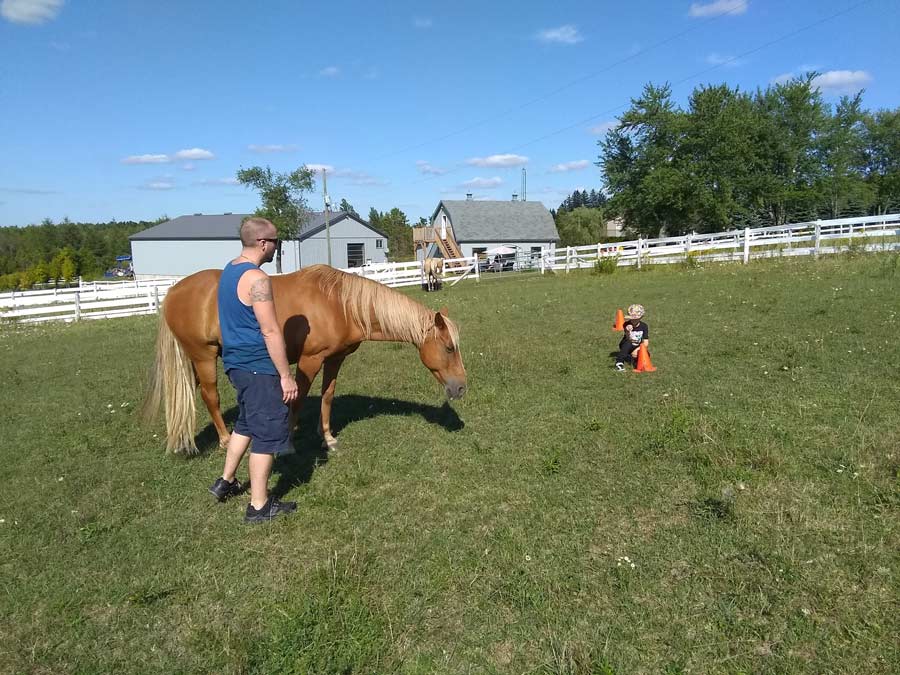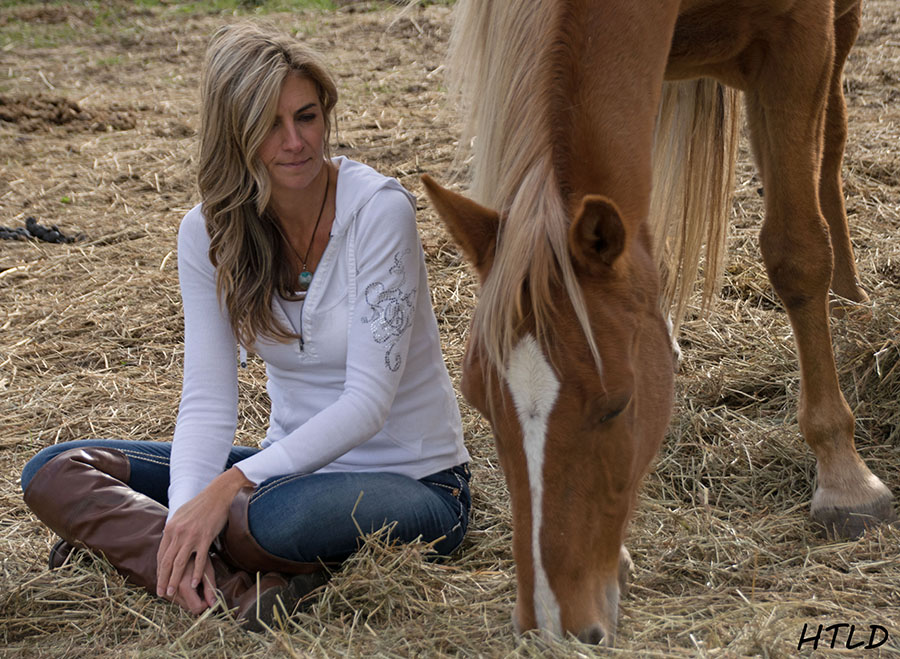ERIN – The connection between a horse and rider is a well discussed topic, but what about the bond between horse and any other human?
Psychotherapist Jasmine Chomski has been using horses in equine-assisted psychotherapy for years and using that bond to help her clients.
“People interact with the horses and do problem solving activities with them and then whatever shows up, whatever comes out there in the session is what is going on in their life,” Chomski said.
But that wasn’t always the case. About 17 years ago she began seeing clients in a private office.
However, while she was completing her master’s degree in psychology she was riding and training her horse often and spent a lot of her time at the barn.
“I just started being really curious about how horses can help people because they certainly make me feel better when I’m around them,” she said. “So, I started getting involved more in doing horses with the therapy that I was doing.”
And that feeling of well-being around horses goes beyond horse people in Chomski’s practice at Pathways Ranch.

Miles Chomski, left and his son Jaxson Dyer-Chomski participate in a psychotherapy session. The pylons represent a goal they want to work on. In this case, they were working on having a calm environment at home. They had to move the horse, Sage, without touching him, through the pylons. After that, the father and son spoke with psychotherapist Jasmine Chomski and talked about what happened and processed the thoughts and feelings that came up. Submitted photo
Her clients are people of all ages, but recently she’s seen more teachers and children experiencing anxiety as the school year begins in the midst of the COVID-19 pandemic.
“I find that people are struggling actually more now because I think that we thought we’d go back to normal by September,” she said.
The horses are used to help learn what it is that the client is actually feeling in a way that’s difficult to mimic in traditional private practice.
Where in traditional practice clients are expected to come in, sit down and share their emotions, secrets and souls to a person they don’t know well, when horses are in the picture the animal shares the focus, Chomski said.
“We stand up and walk around with the horses so … I think being in nature is immediately quite calming,” she said. “I find that being with the horses it’s just not me, and it’s them and also my dog and my cat are there as well.”
She said the horses “create this safe environment for [clients] where they don’t feel on the spot, like the horses kind of take up all the attention.”
The second way therapy with horses is different from traditional therapy is a de-emphasis on self-reporting.
Self-reporting means “I come into the office and I’m going to tell you what’s gone on and I’m going to tell you what my husband said to me and this is how I felt and this is what’s going on and so we never really get a chance to see things from the other person’s perspective or how that person is actually showing up,” she said.
With horses Chomski said she’s able to “see and pinpoint this is how you’re actually showing up because this is the response that we see immediately.
“So, they are able to see and take responsibility for their own behaviour, thoughts and feelings and then they’re able to change it.”
She then works with her clients based on the horse’s response and after, the client re-approaches the horse and sees how outcome of their interaction changes based on their actions.
“They’re able to see the immediate cause and effect of their thoughts and their behaviours and their feelings,” she said. “So it makes therapy go deeper and quicker because of that.”
Helen Fishburn, executive director of the Canadian Mental Health Association Waterloo Wellington agreed that horses can help with therapy.
“There is considerable research on the value of a pet re: mental wellness, as well as the value of equine therapy as a complementary approach in conjunction with other therapy,” she wrote in an email to the Advertiser. “Equine therapy has been shown to enhance emotional regulation, self-confidence, and build trust and empathy.”
Chomski said equine-assisted therapy doesn’t always have to take place in a therapy session either. She offered a few tips for horse and pet owners to try with their animals.
The first thing she suggested is to be present in the moment.
“One of the basic exercises I do is to engage all of our senses to really be present in the moment,” she said. “So we can do that with our animals because we can focus on their breathing, we can feel their coats, and we can smell what they smell like, and all of that so that’s one of the most basic things that we can do.”
The other tip was to be aware of how the horse is responding.
“If a horse is maybe walking away from you, or maybe you’re riding and you’re not really having a good connected ride, ask yourself what’s going on with you,” she said. “The horse is responding to that energy.”
She then suggests “taking a look at how do I want to be with my horse today or how do I want to feel even in general …
“And I think that’s the biggest mistake that horse owners make is they don’t listen enough because the horses are going to tell you. And I can see that being a big thing now with so many people facing more anxiety.”
She said horses respond to the way humans are feeling on any given day and it doesn’t really matter how they’ve responded in the past.
“That’s all the horse wants to know, who are you right now?” she said. “And that’s all that we can do right now in the present moment because things are changing so much.
“They are very good at helping us with that.”
The welfare of her horses is very important to Chomski.
Located in the Town of Erin, between Erin and Hillsburgh, her ranch has enough paddock space that the horses can roam free and are well cared for.
“They get to decide whether they participate or not,” she said. “And sometimes certain horses will step forward and other ones are like, ‘nope,’ you know and they’ll just stand on the peripheral.”
However, she did say her horses are interested in people and love the interaction.
“Every day they’re at the gate going ‘what are we doing today?’” she said. “You can see there’s a willingness in them to help and they are allowed to feel and think for themselves.”
Chomski was able to continue her practice through the COVID-19 pandemic and plans to continue to function in Erin as long as she can, unless the winter gets too harsh and she needs to take some time off.
For more information visit pathwaysranch.ca.



